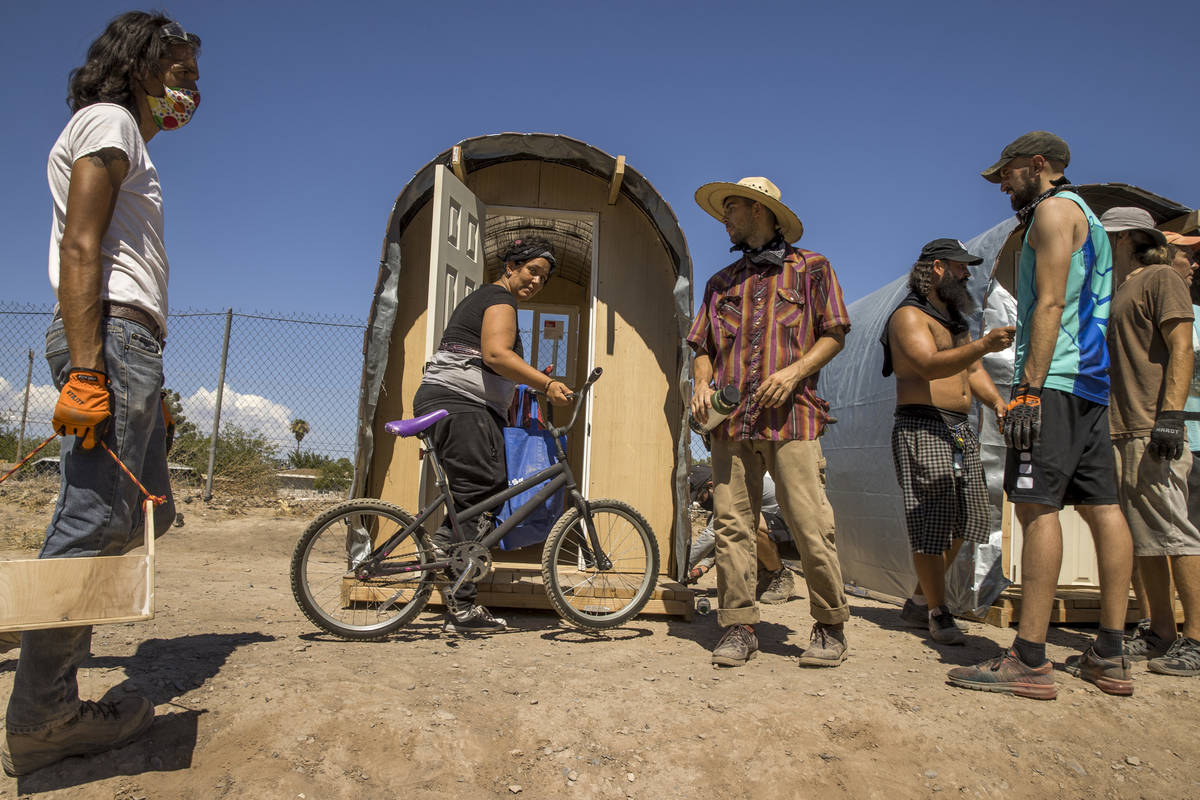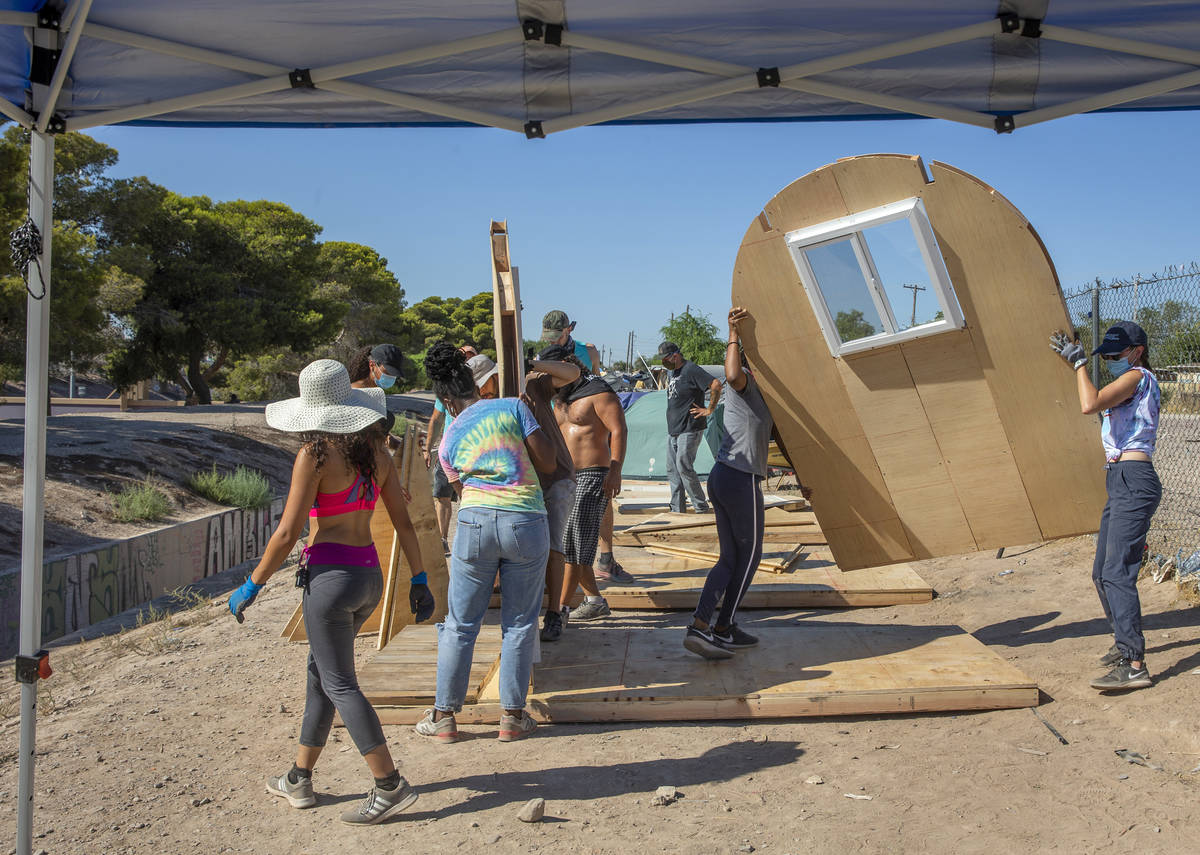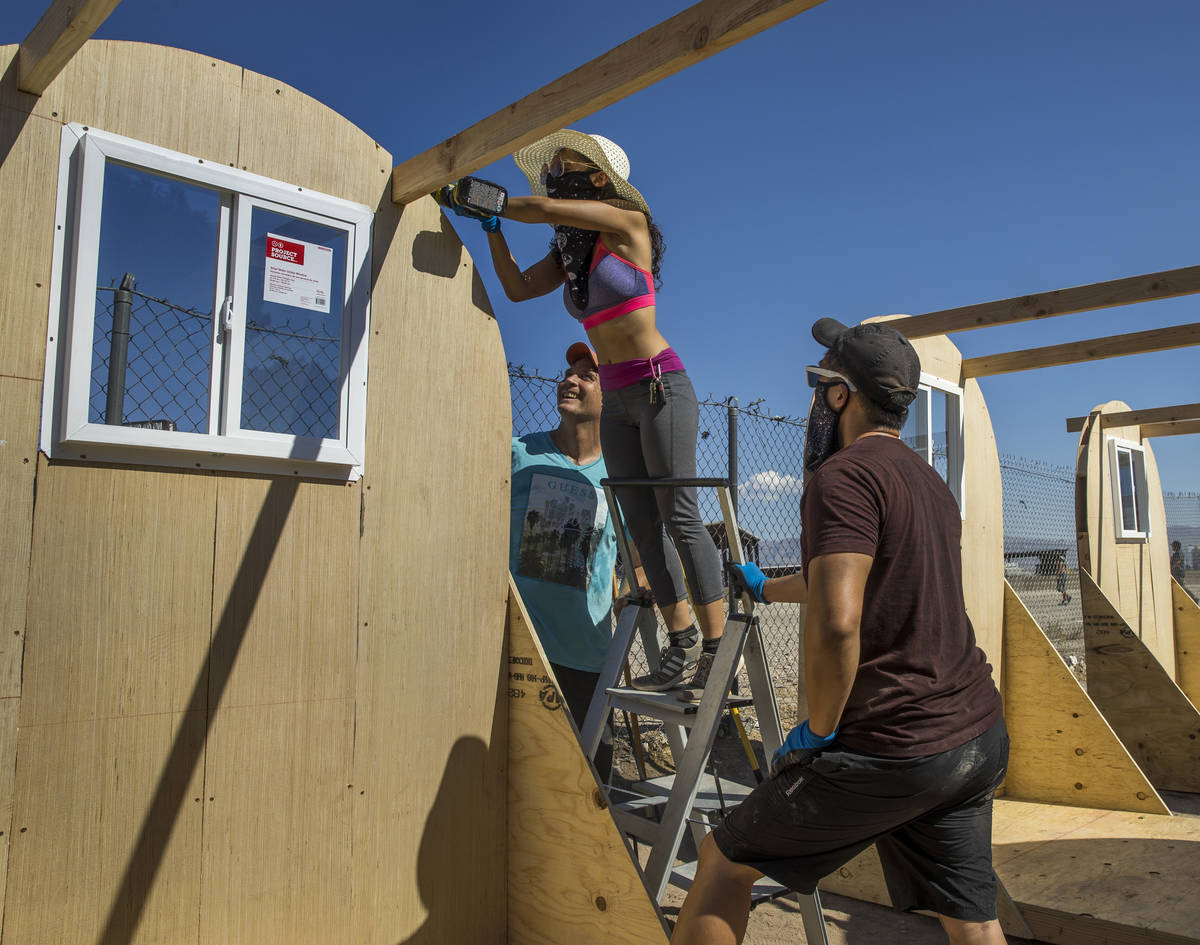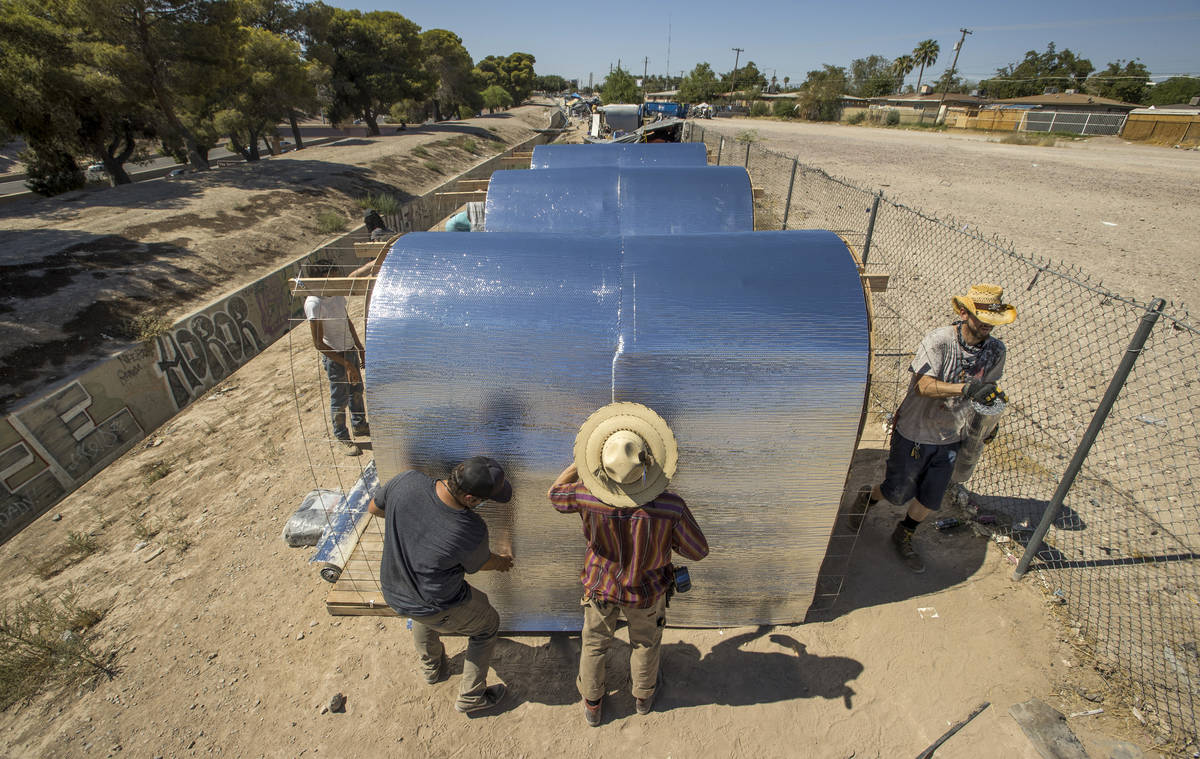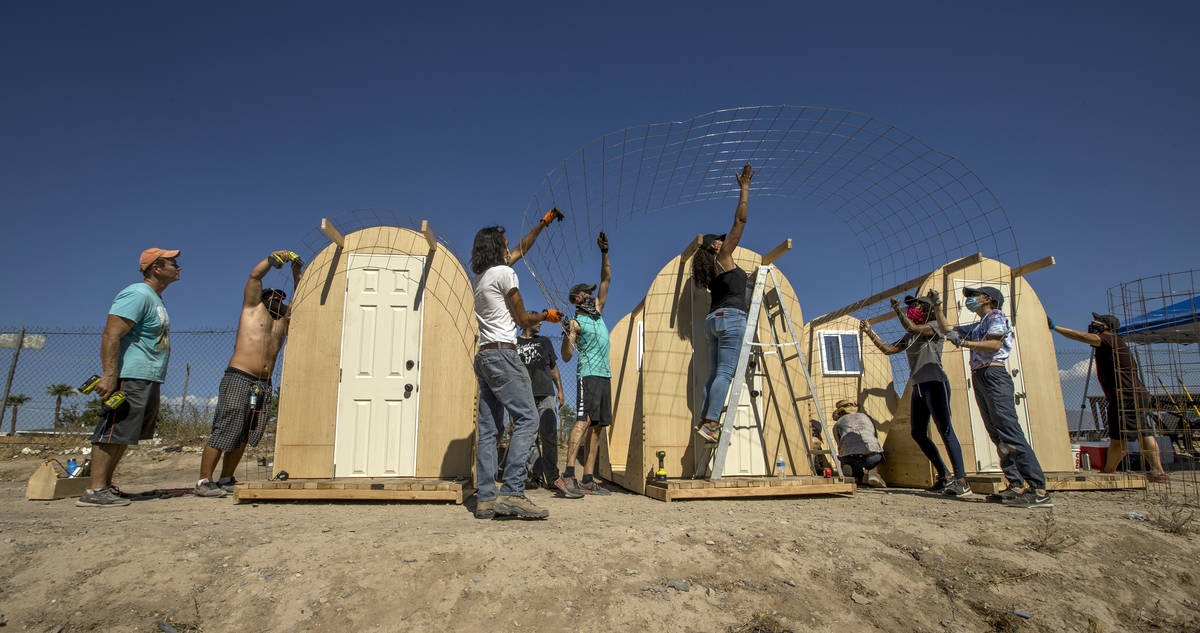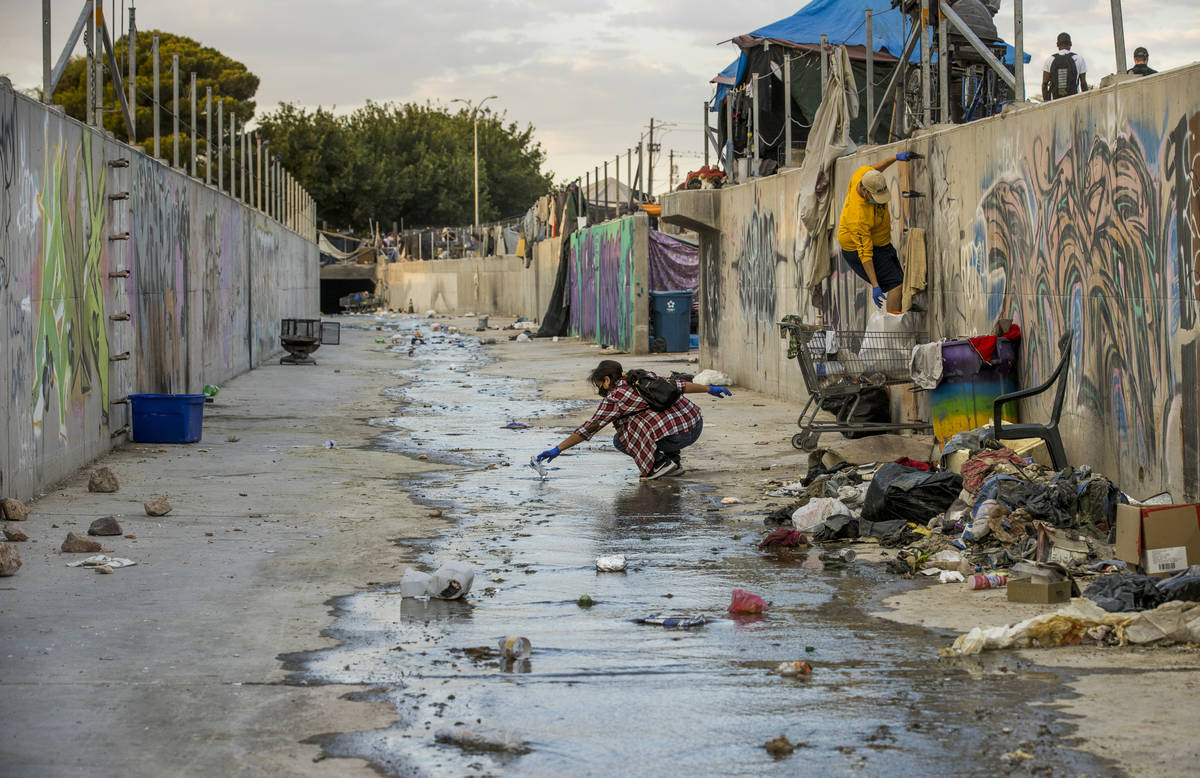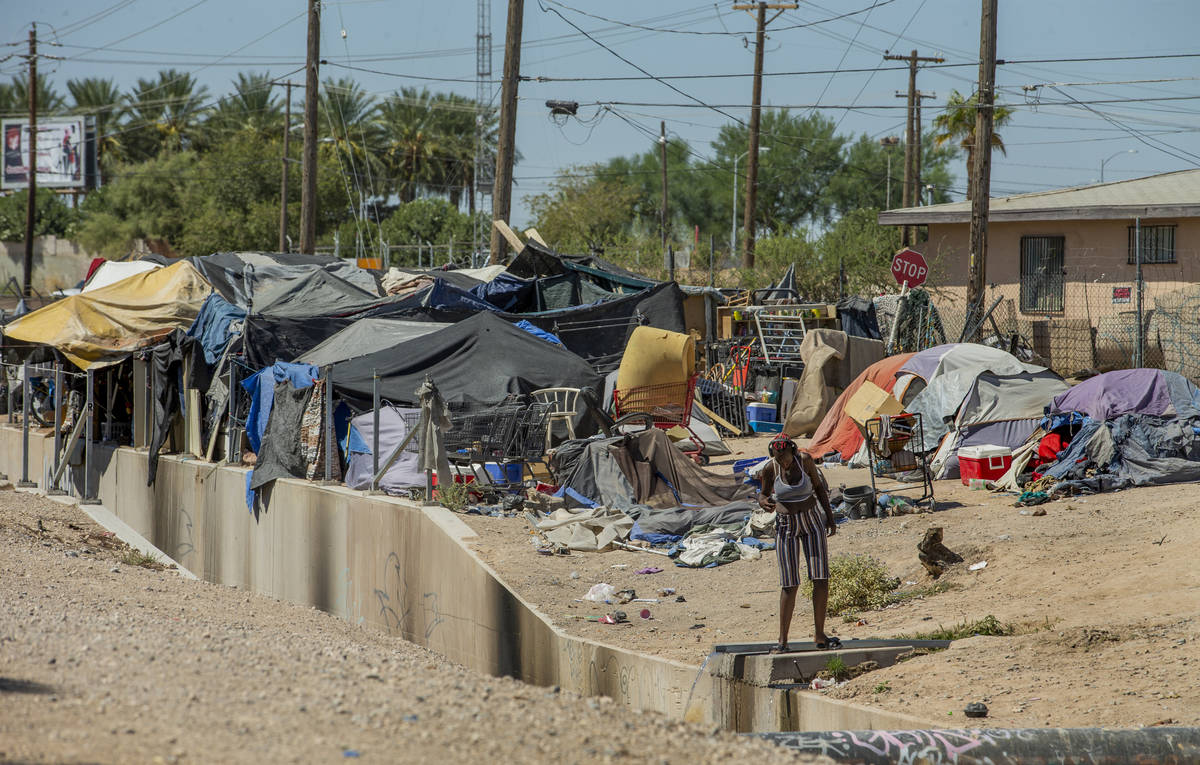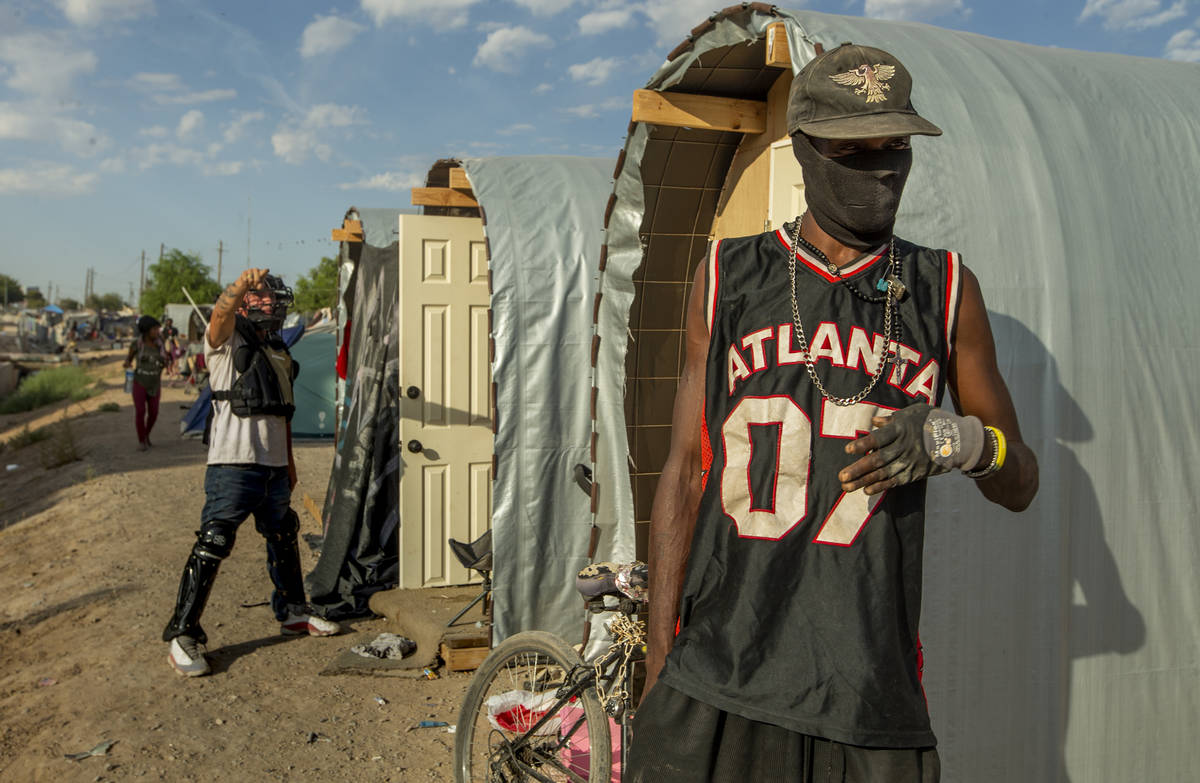Days may be numbered for North Las Vegas drainage canal homeless camp
The homeless people living in and around a series of drainage tunnels along Interstate-15 in North Las Vegas first spotted a “NO TRESPASSING” flyer bearing the city’s logo on Friday, clipped to a fence near Owens Avenue and B Street.
It went on to say that the stretch of dusty drainage tunnels where about 100 homeless people have been living on public land for months was scheduled to be cleared and the damaged fencing repaired or replaced on Monday.
It would be the third recent attempt to clear the homeless encampment, which has grown from a handful of tents and tarps to a sort of squatters’ village in the channels with the construction of 10 insulated 40-square-foot huts.
Protesters, most of them members of the Food Not Bombs activist group, lined up in front of the camp at 5:30 a.m., ahead of what they thought would be another attempt to dismantle it. Three legal observers in red shirts stood at the ready by James Gay Park and some of the activists said they had brought money for bail in case they were arrested.
The showdown never happened.
Aside from a couple North Las Vegas public works trucks that arrived to begin cleaning debris in the wash, it was just another blazing hot day in the Las Vegas Valley.
Despite the lack of action, activists still fear the encampment’s days are numbered.
“We’d absolutely work with the city; and we’re trying to plot a model for other cities to look at,” one member, Joey Lankowski, said of the shelter-building effort.
Lankowski, his friend, Robert Majors, and other activists call it the Sidewalk Project, and say they have created a nonprofit with the aim of building more wooden huts at the already sprawling encampment.
“We’re trying to build a sustainable community with free power, free housing, compostable toilets. It could be something so beautiful, if they would just help us out,” Majors said of the city.
Lankowski said the huts cost about $600 apiece and that donations are on hand to build six more. The group hopes to add solar panels to the huts soon.
City of North Las Vegas spokesman Patrick Walker declined to discuss the camp, but noted that Monday’s activity could hardly be called a raid.
“We did not displace anyone,” he said. “Nobody was living down in the channel where our crews were cleaning. I know there are people living in the encampments that line the channel, but we did not touch those.”
Nevada Department of Transportation spokesman Tony Illia said the department had previously suspended most of its major homeless encampment clean-up activities during the COVID-19 pandemic, in compliance with federal guidelines. He said the current push to dismantle the encampment is driven by the dangers of living in the flood-prone channels and the public health threat it poses.
“It’s extremely dangerous occupying drainage facilities due to possible heat stroke as well as flash flooding, especially during monsoon season,” Illia said in a statement. “Additionally, there is a significant biohazardous risk since human waste and trash can rapidly accumulate inside drainage facilities, with the runoff eventually making its way into the Las Vegas Wash and public water supply.”
On Monday morning at the wash, as the temperature climbed into the triple digits. Clothes hung from lines strung along a tunnel filled with discarded clothes and pizza boxes. Some people had garbage cans outside of their tent; others didn’t.
Alteri Burks, who has lived on the streets for 22 years, said his hut with a white door, with a lock for security and adorned with an American flag on its inside, is the first shelter he’s had since becoming homeless at 14. He is now 36.
“It’s not big, but it’s a blessing,” he said. “This could work. But there’s just so many people out here that come and don’t know how to treat this place. And then we have problems.”
Contact Briana Erickson at berickson@reviewjournal.com or 702-387-5244. Follow @ByBrianaE on Twitter.



